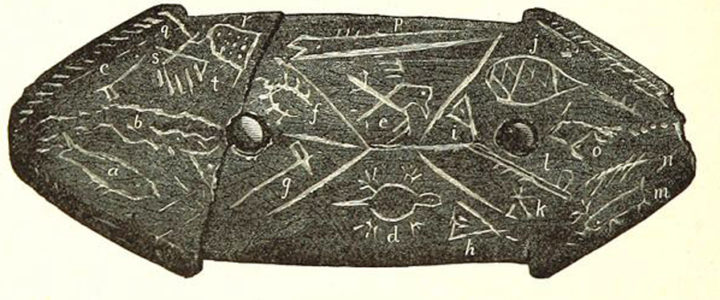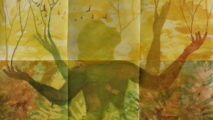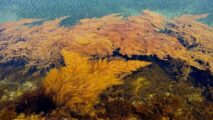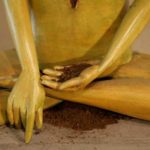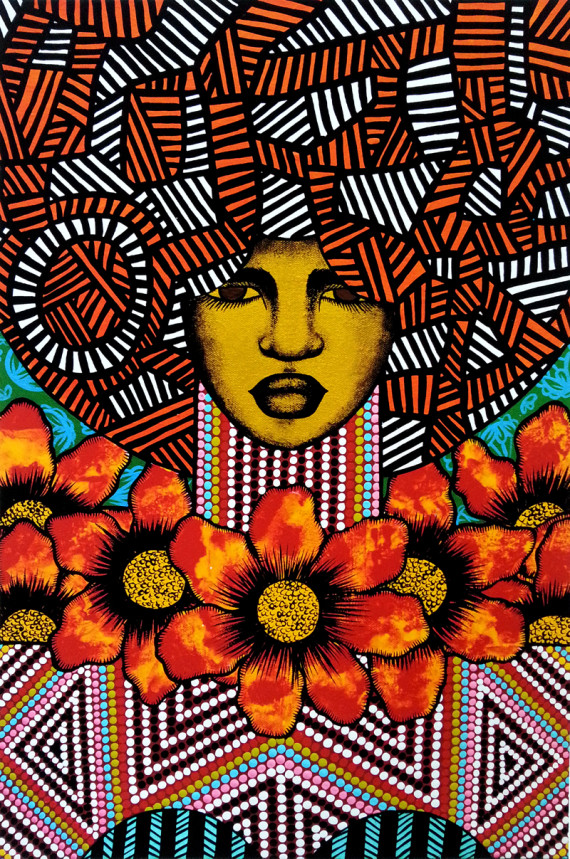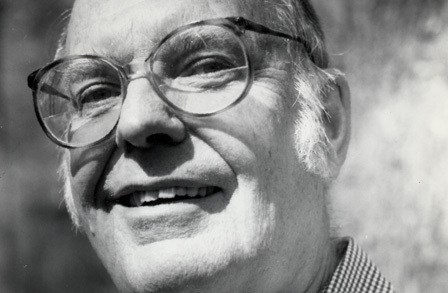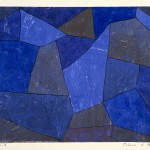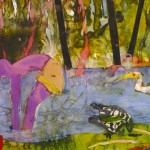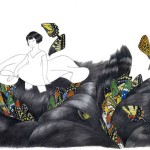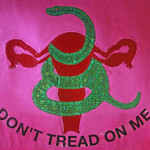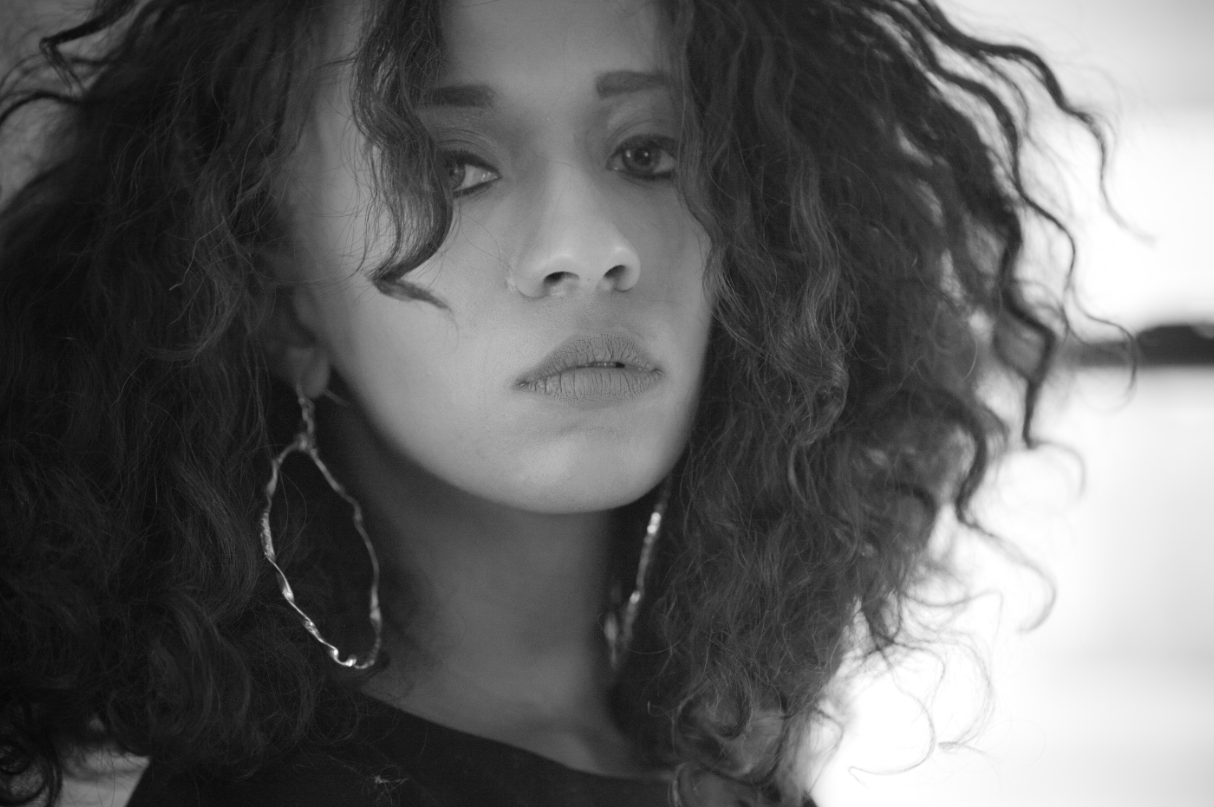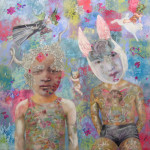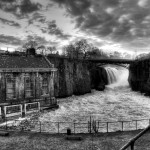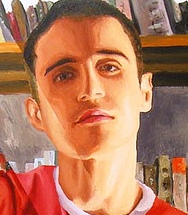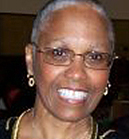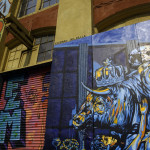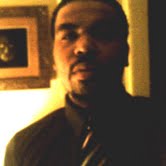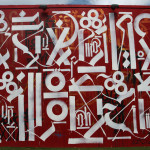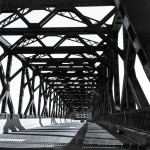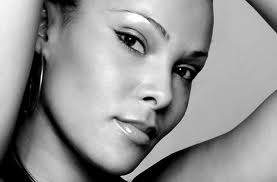Henry Hudson’s boat. September 2, 1609
The actual founding of New York City occurred in 1615 when the New Netherland Company, a subsidiary of the Dutch East India Company chartered to make four voyages within a three-year limit, built a stone house on the lower tip of Manhattan Island. Around this stone house, the huts of traders sprang up. This was the inconspicuous beginning of the city and for some years there was no change in the scene. There was just the storehouse and the rude huts of a few hardy men who bartered with the Indians for furs. (Kieran 3)
One.
Everything about New York is a barter.
Every single moment that one stands on the lower tip of Manhattan,
the traders begin to spring into their rudeness, small claims on the biggest places
and all the while, someone is pushed out of the way –
the beautiful creatures that fly in the air,
the creeping critters on the sands below the ice in March.
And, at some point, in May or June, when the grasses are about to spring
from their seeds, stones are place over them by the companies.
Nobody thought much about progress in the beginning.
None were able to conserve the birds, and for some years –
the harbor was still prolific and engorged with the natural.
It was only when the grease from the skins began to slink into the mud
that the locals began to question the new habitants’ storehouses.
At first, they simply looked into the buildings – to see the skins,
and the fat, but the blood would streak into the streets and hasn’t stopped.
THE PEOPLE
“By 1500, Lenapes have lived in the area of Greater New York City for 1,500 years. They call their homeland Lenapehoking.” (Mushabac and Wigan)
“Land is the gift of the creator.”
Which creator makes the land in New York?
Which party is responsible for the area the people called Lenapehoking –
because there is a new land being made in ways that don’t resemble the first waves,
sandy marsh, soils and glacial deposits.
The newest construction is more angular and less ruddy.
The buildings going up are blue in color, more like steel than copper.
The brick and mortar are a darkness, a blacker brick
than the local soils reddish and golden points.
1626. Construction of Fort Amsterdam begins
at the southern tip of Manhattan. (Mushabac and Wigan 7)
The lightness begins to shift, shadows fall in places where there had been sun streaks.
The birds lift off the tops of the workhouse.
1626. Eleven African men, probably captured from Spanish or Portuguese ships, are brought to New Amsterdam to labor as slaves for the Dutch West India Company. (Mushabac and Wigan 7)
And the labor force arrives
at the same time the rookeries are emptied out.
Birds seeking life somewhere beyond the shore
and the feathered inhabitants leave the coast of the islands
moving across the Hudson to New Jersey
so many species of shorebirds and crows vacated
to greener shores leaving the gulls to their trash.
Imagine the walls of Fort Amsterdam which rose
from the rocks and sewage
and all the while – in some new formed rule –
the strong backs of slave labor began in the galleries
and moved into the corners of the streets
as the sand became hard and dense from footprints
and the water blackening and slick with human bondage
and waste and wear, headbands tied up the hair
and metal clanking chains remanded and maintain order.
Whose bright idea was it to push some of us down?
Who gave the orders to cast stones against the tree?
Their eyes were fixed on the blue sky, the lushness of the waters,
open air and whole vistas of movement in the clouds
while the narrowness of their oppressors began to skim off
the humanness, eyes no longer met with respect,
bodies no longer equitable – who determined the price to be paid?
Whose best thinking put a price tag on another?
Pamela Kallimanis, M.F.A. in English Writing and Poetry from Sarah Lawrence College. She is an Instructor in the English Department at Hunter College and a student of International Migration Studies at CUNY Graduate Center. Her work explores questions of identity, ethnicity, migration, loss and trauma. She teaches a wide range of courses from Literature, Creative Writing and Poetry. She is the author of “The Zero Elegies” published by Three Mile Harbor Press. http://cuny.is/professorwrite2
Related Posts
« THE SPRINGSTEEN SENTENCES – Barbara Berman SURVIVORS – Amy Barone »
